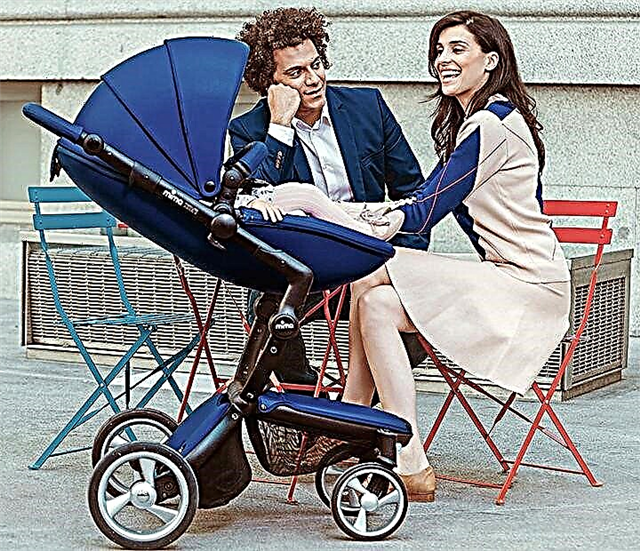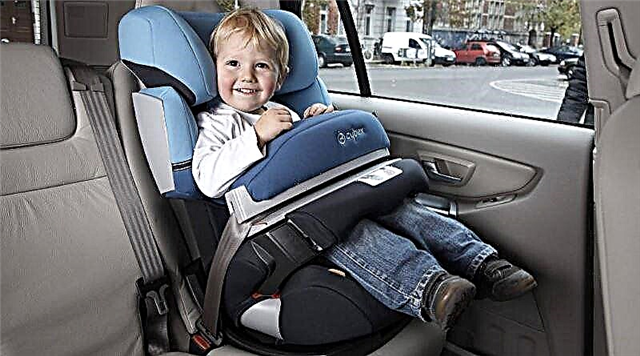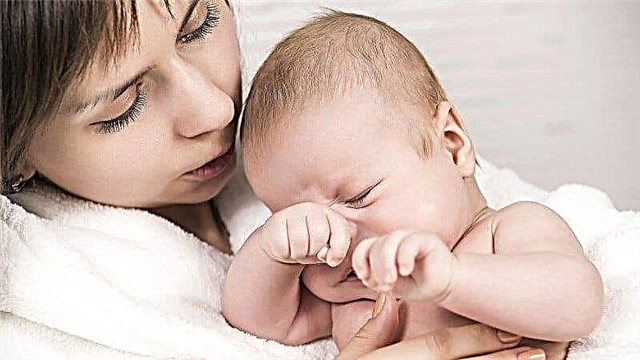
The decision has been made - the child will have his ears pierced. Usually, this decision is not easy for parents. And the more natural is the desire of moms and dads to learn a little more about children's piercings. The period "after" causes the greatest concern. How a child can endure the consequences of a mini-surgery and how to help him, we will tell in this article.
About baby piercing
There is no consensus among doctors about ear piercing in childhood. There are many competent and not very competent opinions, judgments and hypotheses. Most pediatricians tend to believe that earlobe piercing will not cause much harm to a baby if there are no obvious contraindications. These include diseases of the heart and hematopoietic system, mental illness and epilepsy, diabetes mellitus, skin problems, allergic reactions, hearing and vision problems, and a state of immunodeficiency.
Dermatologists warn of the possibility of development allergic contact reaction to metalsthat are contained in jewelry alloys. And reflex therapists say that piercing the ears can cause irreparable harm to the baby's health, because the most important nerve active points are concentrated in the earlobe, which regulate the activity of many internal organs.


Ophthalmologists urge you to be extremely careful, because some points on the earlobe are responsible for the child's visual acuity, and otolaryngologists warn of possible hearing problems if the baby had certain prerequisites for this before the puncture.
There is no consensus about the age at which a child's ears should be pierced. Parents decide on their own when to do it. Doctors for the most part say that it is better not to touch the ears until the age of three due to the weakness of the baby's immunity, due to the fact that, due to an early age, it will be difficult for a child not to injure his lobes by accidentally rubbing jewelry.
The only thing in which all doctors agree is in the answer to the question of whether it is possible to pierce the ears at home. In no case should this be done, since piercing is a minor surgical intervention, and any such intervention must be carried out under sterile conditions so as not to infect the child and to avoid complications.

There is a wide range of methods for piercing ears in the conditions of offices and cosmetology clinics. These are traditional punctures with needles, and more bloodless and painless, and most importantly, quick methods - punctures with a "pistol" and an American disposable device "System 75". There is no point in piercing a child's ears at home with a gypsy needle dipped in vodka, with the risk of infecting the wounds, as was done several decades ago.
Modern methods are less traumatic, since the "stud" earring, made of a special medical alloy, also acts as a needle during the piercing process. Thus, the earring is instantly in the ear and automatically closes. Much harder and longer is given leaving, which is a prerequisite for a successful ending the whole idea.


How do I care for my pierced ears?
After the ears are pierced, the piercing specialist usually tells the parents how to care for the wounds so that the formation of a correct and painless tunnel in the ear occurs faster. The process will really require concentration and mandatory adult supervision. This primarily concerns the treatment of wounds. Puncture sites should be treated daily, 3-4 times a day. It is best to carry out the procedure in the morning, at lunchtime and in the evening.
Mom should only handle the treatment with clean hands. Hydrogen peroxide or any other antiseptic - "Miramistin", "Chlorhexidine" is instilled into the wound. Children should not treat their ears with alcohol or alcohol-containing solutions.
After the antiseptic is instilled, the earring is gently pushed back and forth if it has a bow (such earrings can be inserted into ears pierced by the traditional manual method using a piercing needle). If the puncture was made using modern methods - “pistol” or “System 75”, then there is a “nail” in the ear. After instilling an antiseptic, it is slightly pushed back and forth and gently scrolled clockwise.


For some time after ear piercing, some changes should take place in the child's life. The girl does not need to bathe for the first 5 days after the puncture. This also applies to visiting the bathhouse, sauna, and pool. It is not necessary to take the child to the public pool for the first 3-4 weeks after the puncture. With water, pathogenic bacteria and viruses can enter the wound, and water chlorinating agents can cause serious inflammation. For the first five days, it is better to refrain from washing your hair. There is no need to swim in the sea and the river for a month.
As long as the holes in the lobes heal, proper hair care is important. It is advisable that the hair does not come into contact with the wounds. A girl with a short haircut has nothing to worry about, but if the hair is long, it is best to keep it constantly tied up in a high hairstyle - a ponytail, a bun at the back of the head, a basket-shaped braid. You should be very careful when combing your hair, the earring should not be touched by a comb.


Physical activity and outdoor entertainment are best left for later. During running, jumping, playing sports, dancing, perspiration increases, and sweat (a rather corrosive substance) causes additional inflammation in the unhealed wounds of the earlobes. If the child is small, it will be difficult enough to make sure that the baby does not touch the lobes of her ears with her pens, but this should be done without fail.
It is better not to touch medical "studs" and not to replace them with other earrings for at least a month and a half.
During this time, if the wounds are properly cared for, the holes stop hurting, they are covered from the inside with an epithelial layer, and you can change the first earrings to any others without much fear. The main thing is that these other decorations are made made of high quality gold without nickel impuritiesso that they are not bulky and heavy and have a comfortable and secure fastener.


Psychologically, it is quite difficult to remove for the first time the medical “nails” that have already become habitual in the first month. Mom is scared already because she is afraid of not being able to then insert other earrings into her ears and cause severe pain to her daughter. If you do everything carefully, then the child will not hurt. And you can remove the carnations in the following way:
- Prepare hydrogen peroxide and a piece of clean gauze or sterile medical bandage.
- Wash your hands, treat them with Miramistin, put the child's head on your lap.
- With one hand, you should grasp the front part of the earring, and with the other - the stud fastener and slightly begin to pull the fastener to the edge. It is important that the second hand at this moment securely fixes the earring rod so that it does not move in the ear and does not cause pain to the child.
- A common problem is the tight fasteners of the medical “nails”. Get ready for the fact that it won't give in easily, especially since most of these earrings fasten with two clicks.


- Sudden movements are prohibited. Only smooth and careful, but determined movements. It is important to distract the child, to calm him down so that he does not jerk his head and resist. Inaccurate movements can lead to injury to the lobe.
- After the fastener is removed, you need to carefully remove the "stud" rod with a twisting motion, lubricate the lobe in front and behind with hydrogen peroxide and leave the child alone for 15-20 minutes.
- After this time, the lobe is again lubricated with peroxide, and new earrings are treated with it. With the edge of the bow of the earring, they gently grope for a hole and carefully insert the bow into the lobe. If at the same time droplets of ichor or pus appear, it's okay. After the insertion of the earrings, it is fastened and the lobe is once again treated with an antiseptic.
If you cannot do it yourself, you can go to the clinic or the office where the piercing was performed, there the “carnations” will be removed and new earrings will be inserted into the child. Usually there is no additional charge for these services.


Possible complications
There are usually no negative consequences for a child's ear piercing if the mother did everything responsibly and correctly - she took her daughter to a good licensed clinic, the punctures were made in sterile conditions with sterile instruments, and the subsequent care was correct and thorough. However, even with proper care, the child's ears sometimes fester after a puncture. This indicates that an infection has joined the wound.... The small amount of pus that is released during processing or during movement of the earring in the ear should not be a serious concern. It is enough to lubricate such a wound several times with Levomekol or Baneocin ointment.


If the ears are severely suppressed, the lobes look very swollen and painful on palpation, if the skin has changed color and has become purple or grayish, you should definitely show the child to the doctor. The temperature after ear piercing sometimes rises, as the people say, "on the basis of nerves." But if the rise in temperature did not occur immediately upon returning from the beautician's office, but after a few days, against the background of suppuration, then this also says either about the addition of a bacterial infection, or that the child's body "does not accept" a foreign body, and immunity with all its might rejects the earrings.


If the ear is inflamed, reddened, but there is no pus, this may indicate a possible allergic reaction to some component of the alloy from which the jewelry is made. Ignoring the contraindications for piercing can lead to complications from a vulnerable organ or body system. If the child suffered from otitis media before the manipulation, and the parents still decided to pierce his ears, then hearing impairment is possible. Wounds do not heal for a long time and can become very inflamed in children with diabetes mellitus, with diseases of the cardiovascular system.
Ophthalmologists argue that an incorrectly chosen puncture point, if it is displaced down towards the cheeks, can lead to a drop in vision and even the development of glaucoma.


The time of year also affects the likelihood of complications. In summer, in the heat, the child sweats more, it is dusty outside, which increases the likelihood of suppuration and inflammation. In winter, the baby lies in wait for another trouble - the effect of cold on the pierced ears is also not the best way to affect the healing of the wound. In addition, in the cold season, children wear hats, scarves and sweaters; mechanical injury to the ear is possible if the earring snags on clothes.
It is best if the rehabilitation process after the piercing falls in May or September.
How can I help my child?
If complications appear, then a doctor should treat the child. The unauthorized prescription of drugs, especially antibiotics, is unacceptable. All parents can do is to treat the wound with an antiseptic without alcohol and take their daughter to a pediatrician who will decide whether to take off the earrings and start urgent treatment, or if you can help the child without removing the jewelry from the earlobes.


To reduce the likelihood of negative complications, simple security measures that all parents can take:
- a small child cannot understand the full value of an object inserted into his ears, and therefore you need to be more careful so that the baby does not try to take out the earrings;
- you should buy earrings with a reliable and strong clasp to prevent spontaneous opening of the earring, because a small child can swallow it or inhale it;
- you should not buy earrings with pendants and pointed elements for a child, this will only increase the likelihood that the child will catch the earrings on a toy or something else, pull and severely injure the earlobe up to its complete rupture;
- earrings should not contain nickel, otherwise there is a high likelihood of developing an allergic reaction.
For information on when to get your ears pierced and how to care for them, see the next video.



